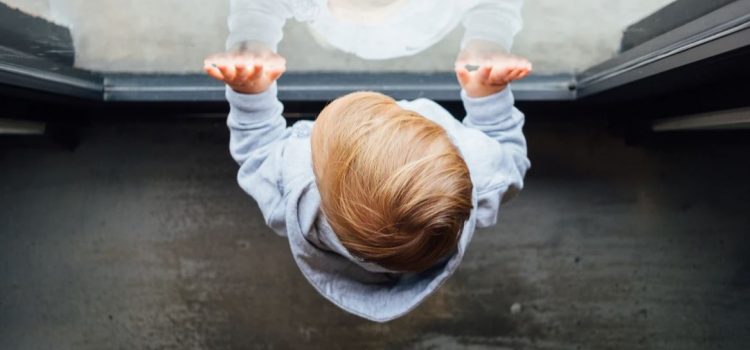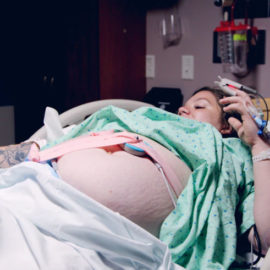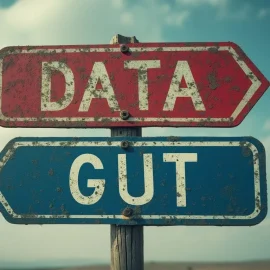

This article is an excerpt from the Shortform book guide to "What Happened to You?" by Bruce Perry and Oprah Winfrey. Shortform has the world's best summaries and analyses of books you should be reading.
Like this article? Sign up for a free trial here .
What are the major short-term effects of childhood trauma? How can trauma affect other areas of a child’s life?
According to Oprah Winfrey and psychiatrist Bruce D. Perry in their book What Happened to You?, two of the most common short-term effects of childhood trauma are 1) an inability to love and be loved, and 2) an overactive stress response, which can lead to increased anxiety and difficulty concentrating.
We’ll explore both in detail below.
1) An Inability to Love and Be Loved
The first effect of childhood trauma is the inability to love and be loved. Perry and Winfrey maintain that one of the most important skills we develop as infants is the ability to experience love. At this stage of development, we wholly rely on our caregivers to meet our needs (for example, food, soothing, or a diaper change). If caregivers consistently and lovingly respond to our needs and make us feel better, we begin to form positive associations between human contact and comfort. In other words, we learn that being around people and experiencing love makes us feel good.
However, if a child needs something and the caregiver isn’t there, is only there at certain times, or meets the need with an abusive reaction, the child doesn’t associate human contact with comfort and love. Instead, human contact is scary and unpredictable.
According to Perry and Winfrey, this negative view of human contact can hinder the child’s ability to form healthy relationships. Because she doesn’t experience love at home, she might have a harder time giving and receiving it in situations outside the home—for example, at daycare. She might not show affection to her classmates and teachers, or she might not know how to react when someone shows her love.
Perry and Winfrey suggest that this can create a vicious cycle. When the child doesn’t have a loving home, she struggles to connect with others and develop loving relationships. Without these relationships, she doesn’t experience love in other places and continues to drift further from others. She therefore becomes more isolated and never experiences the love needed to break the cycle.
| Attachment Theory: The Importance of Loving Caregivers Perry and Winfrey’s assertion that the caregiver-child relationship impacts brain development aligns with the basic tenets of attachment theory. Attachment theory suggests that to develop healthy social, emotional, and cognitive skills, an infant must receive consistent love and care from at least one caregiver. Attachment theory started with a basic observation, first noted by psychologist John Bowlby in the 1950s. Bowlby noticed that when babies can’t see their caregivers, they have a common set of behaviors, including crying, screaming, and searching. He called these attachment behaviors. According to Bowlby, the evolutionary purpose of attachment behaviors was to make sure that an infant’s attachment figure, or caregiver, paid attention to the infant. Bowlby theorized that babies who exhibited these behaviors received more care and were therefore more likely to survive. Over the next two decades, psychologist Mary Ainsworth challenged and extended Bowlby’s theory. Like Perry and Winfrey, Ainsworth suggested that if a caregiver consistently responds to an infant’s attachment behaviors with love, the infant’s brain develops in a normal, healthy way. On the other hand, infants who experience abuse or neglect struggle to develop more advanced brain functions such as cognition and social skills. Using this basic idea, Ainsworth suggested that infants can have one of two attachment styles. Infants who receive consistent, loving care (and as a result experience normal brain development) are securely attached. Infants who receive inconsistent or abusive care (and as a result have impeded brain development) are insecurely attached. She further divided insecurely attached babies into two categories: –Anxiously attached babies experience high anxiety when separated from their parents. When reunited with their caregivers, they’re difficult to soothe. –Avoidantly attached babies don’t experience stress when separated from their caregivers. Furthermore, when they’re reunited, they often ignore the caregivers. Like Perry and Winfrey, Ainsworth believed that your attachment style has long-term effects on cognition and social skills, including your ability to develop healthy relationships. However, it wasn’t until the 1980s that researchers began to explore the connection between infant attachment and adult relationships. In Attached, Amir Levine and Rachel Heller explain this research, suggesting that there are three adult attachment styles: 1. Secure attachers are confident in their partner’s affection for them and are caring, nurturing, and compassionate. 2. Anxious attachers worry that their partner will leave them and seek constant reassurance. 3. Avoidant attachers distance themselves from their partners. Researchers once thought that your attachment style as an infant directly led to your attachment style as an adult. Today, however, scientists such as Levine and Heller suggest that infant attachment style is just one of several factors that influence adult attachment. Other factors include your temperament, your parents’ stress levels, and whether you spent time with caregivers other than your parents. |
2) An Overactive Stress Response
Childhood trauma can also overactivate a child’s stress response, making them hypervigilant and anxious. Perry and Winfrey explain that children who live in an abusive home must always be alert for signs of abuse. This means that their stress responses are very sensitive—more often than not, they’re in a fight-or-flight or dissociative state.
While this overly active stress response helps a child survive at home, in other settings, it isn’t so helpful. Perry and Winfrey suggest that a heightened stress response can make it hard for the child to focus in school, make friends, and trust adults. Children who experience trauma are often misdiagnosed with ADHD because they have trouble sitting still and concentrating.
Like the inability to love, a heightened stress response can create a vicious cycle. Perry and Winfrey suggest that if teachers, coaches, and other students aren’t aware of the child’s traumatic experiences, they’ll view the child’s behavior as disruptive. They’ll probably get frustrated, which will further isolate the child, making them less likely to reach out for help and less motivated to follow the rules.
| How to Recognize and Respond to Trauma: Advice for Teachers, Coaches, and Mentors As the authors suggest, if adult mentors don’t notice that a child has an overactive stress response and is experiencing trauma, the child can become even more isolated. So how can adults recognize the signs of stress and trauma and respond in a supportive way? Keep these three things in mind: 1) Recognize: The first step is to know the common indicators of childhood trauma. In addition to the anxiety and concentration problems mentioned by Perry and Winfrey, these indicators include forgetfulness, constant complaints of feeling sick, aggression, extreme perfectionism, and general depression or lack of effort. 2) Respond: If you do suspect that a child is experiencing trauma, questioning her about it may not be the best strategy. This could make the child feel like she is under pressure or in trouble, which could cause her to recede further. Instead, be aware of the ways that trauma might contribute to her behavior, and respond to this behavior patiently and compassionately. 3) Report: If you believe a child is suffering from trauma, you should report it. In the US, educators such as teachers and school counselors are mandatory reporters, which means that they must report child abuse. But anyone in the US can report abuse by calling the Childhelp National Child Abuse Hotline at +1 (800) 4ACHILD, or +1 (800) 422-4453. |

———End of Preview———
Like what you just read? Read the rest of the world's best book summary and analysis of Bruce Perry and Oprah Winfrey's "What Happened to You?" at Shortform .
Here's what you'll find in our full What Happened to You? summary :
- How childhood trauma can have a severe and lasting impact on the brain
- Why it’s so important to address your trauma
- How to heal from trauma and develop healthy relationships






